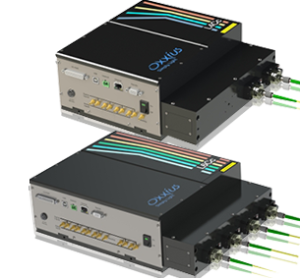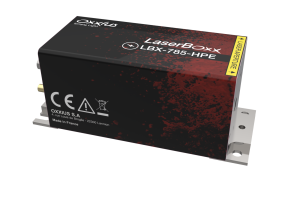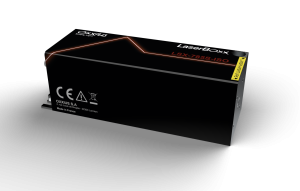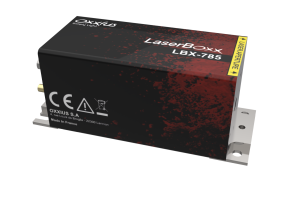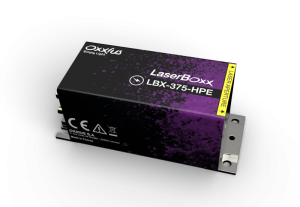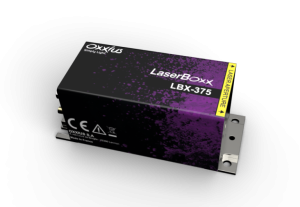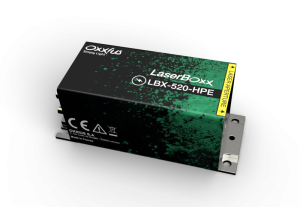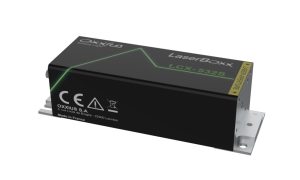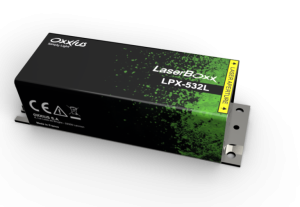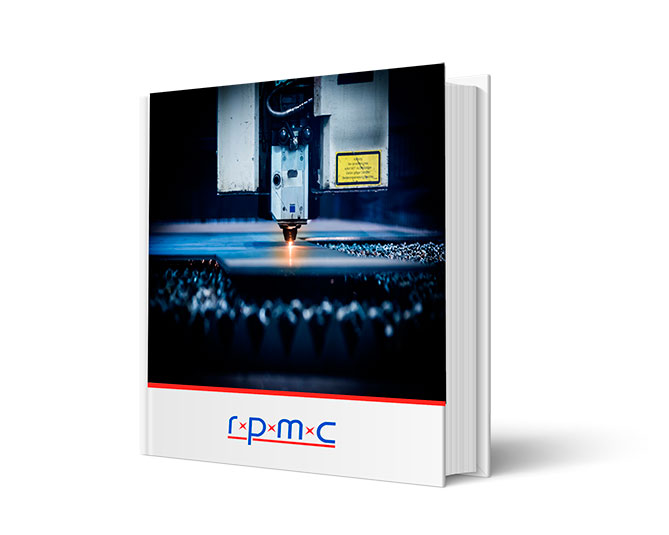Oxxius Lasers
RPMC Lasers is the Exclusive Source for Oxxius’ Lasers in North America
High-Quality, Low-Noise CW Laser Diode & DPSS Modules
-
-
- Proprietary, alignment-free monolithic resonator at the heart of its DPSS lasers
- CW/Modulated, SLM or high-power diode modules & wavelength combiners
- Fast TTL and analog modulation with optional clean-up filter
-
Wide Range of Wavelengths & Powers w/ Integration Flexibility
-
-
- Available in the wavelength range of 375nm to 1064nm
- High-power laser sources in an integrated laser head
-
Compact and Customizable Designs w/ Advanced Combiner Capabilities
-
-
- Compact, highly customizable, flexible all-in-one laser modules/combiners
- Up to 7 combined wavelengths with direct modulation on every source
-
Why Choose Oxxius?
High-Quality, Low-Noise CW Laser Diode & DPSS Modules
-
-
-
-
- DPSS laser features alignment-free, monolithic resonator technology
- Eliminate alignment issues, ensure reliability & long-term stability
- CW/Modulated, SLM or high-power diode module options – Multi-wavelength beam combiners
- Exceptional spectral and spatial beam characteristics, and market-leading power levels
- Excellent wavelength stability with no drift or variation upon restart
- High-performance features: TTL/analog modulation, optional clean-up filter, adv. beam quality & more
-
-
-
Wide Range of Wavelengths & Powers w/ Integration Flexibility
-
-
-
-
- Available in the wavelength range of UV – 375nm to NIR – 1064nm
- Advanced features: analog/digital modulation, fiber coupling, isolators & SLM stabilized options
- Compact laser module available in turn-key or OEM versions
- Dedicated software, USB/RS232 interfaces & external controller w/ power display
-
-
-
Compact & Customizable Designs w/ Advanced Combiner Capabilities
-
-
-
-
- Innovative architecture designed for compactness, reliability & cost to performance ratio
- Flexible, all-in-one laser modules & combiners – Custom solutions tailored to your needs
- Combiner configurations up to 7 unique beam powers/wavelengths -Up to 4 outputs
- Advanced options: motorized filters, adj. split power for light sheet, fast switching for FRAP & more
-
-
-
Oxxius is a leader in the design and manufacture of high-quality continuous-wave (CW) DPSS and diode laser modules, delivering innovative solutions across a wide range of applications. Available in wavelengths from 375 nm to 1064 nm, Oxxius lasers provide exceptional performance with advanced features like analog/digital modulation, fiber coupling, and combiner capabilities that integrate up to 7 wavelengths in a single housing. Their proprietary alignment-free monolithic resonator technology ensures unmatched reliability, with no drift against temperature variations and precise wavelength stability. Oxxius’ products are compact, customizable, and designed to meet the specific needs of biophotonics, metrology, spectroscopy, and other demanding fields. Whether in turnkey or OEM versions, Oxxius offers flexible, low-noise laser solutions with advanced control interfaces and modular options, making them a preferred partner for clients seeking cutting-edge CW laser technology.
Let us help find the right solution for you!

 SHIPS TODAY
SHIPS TODAY 




